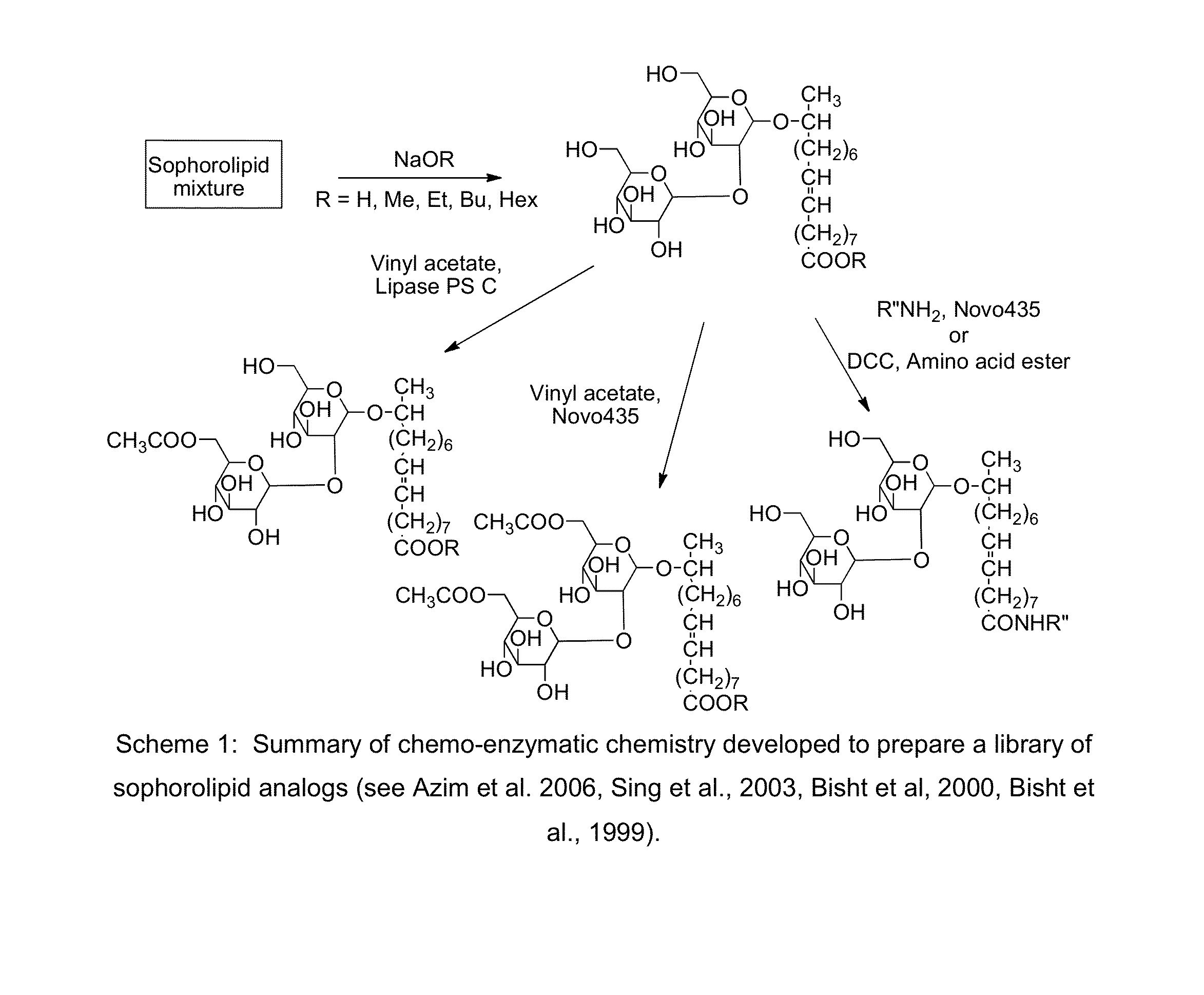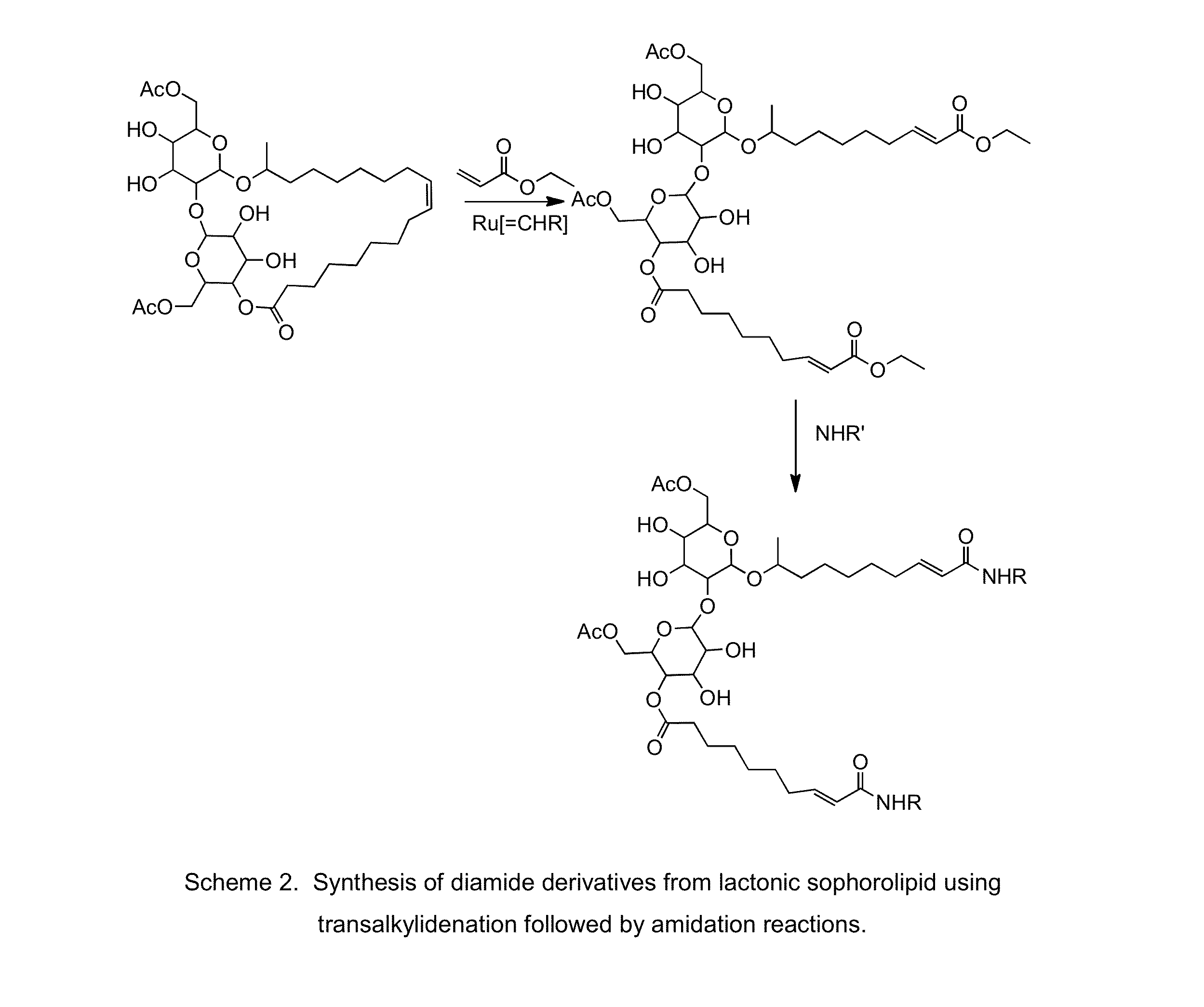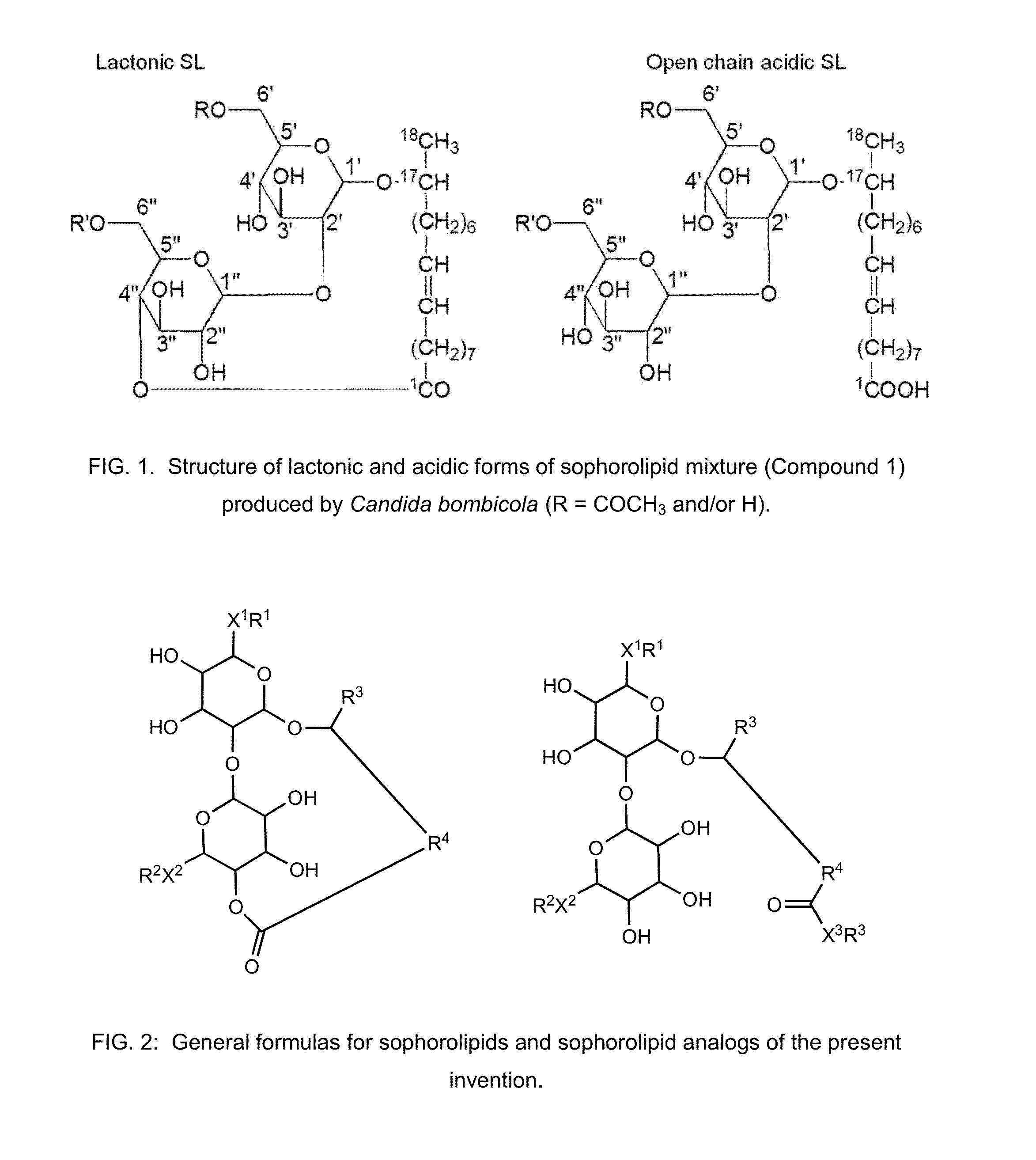Modified sophorolipids as oil solubilizing agents
a technology of sophorolipids and oil, applied in the field of sophorolipids, to achieve the effect of excellent stability
- Summary
- Abstract
- Description
- Claims
- Application Information
AI Technical Summary
Benefits of technology
Problems solved by technology
Method used
Image
Examples
example 1
CMOs of MSL Esters and Amides
[0091]The surface tension change with the increase of surfactant concentration of a series of SL amides was measured at 25° C. and the results are shown in Table 2. CMC and minimum surface tension (MST) decrease as the chain length of the n-alkyl amide moiety increase. The same trend was observed for both series that CMC and MST decrease with the increase of alkyl chain length. This trend can be explained by the increased hydrophobicity of the surfactant hydrophobic tail with increased chain length of the n-alkyl amide.
[0092]The relation of CMC within a homologous series of surfactants and the carbon chain length (straight-chain), n, is usually described as:
Log(CMC)=A-Bn (1)
[0093]Where A and B are constants specific to the series and n is the carbon on the hydrophobic chains. It was reported that the CMC of alkyl-β-D-glucoside decreased by ⅓ for each additional CH2 group (L. Zhang. D.E.S. Thesis, Columbia University). For a series of SL-esters prepared ...
example 2
Emulsification Activity of MSLs with Paraffin Oil
[0095]Emulsion Type
[0096]Dilution Test:
[0097]In this test the emulsion is diluted either with oil (O) or water (W). If the emulsion is O / W type and it is diluted with water, it will remain stable as water is the dispersion medium. However, if the emulsion is O / W type and it is diluted with oil, the emulsion will break as oil and water are not miscible with each other. Oil-in-water emulsions can easily be diluted with an aqueous solvent whereas water-in-oil emulsions can be diluted with an oily liquid. Emulsions of the O / W type have separated layers after dilution with pure oil but form a homogenous phase when diluted by water. Unless otherwise specified, the emulsion type formed by MSLs were oil in water.
[0098]FIG. 13 shows dilution tests for O / W type emulsions. FIG. 13A displays two replicate test tubes with an O / W emulsion (1 mL total volume with water / oil ratio 5 / 5) stabilized by 2 weight % SL-hexyl amide (Compound 25, Table 1) whe...
example 3
Oil Solubilization Activity of MSLs on Lemon and Orange Oils
[0119]The oil solubilization of lemon oil by MSL's was demonstrated through experiments and observations. MSL's used in this example are SL-hexyl ester (16), SL-octyl ester SL (17), and SL-dodecyl ester (18). To test the MSL capacity for lemon oil solubilization, the volume ratio of water to lemon oil, the concentration of surfactant, and the homogenization time (using a sonicator as the means of homogenization) were varied. Concentration of surfactant is calculated on a w / w basis relative to the mass of water being used. To form emulsions, the MSL or other surfactant is first dissolved in the water, oil is added to the solution, and finally the contents of the water / surfactant+oil system is sonicated. Subsequently, the emulsion is allowed to settle for 24 hours at 25° C. before measurements or visual observations are made.
[0120]To evaluate the stability of lemon oil solubilization, photographs of emulsions were recorded da...
PUM
| Property | Measurement | Unit |
|---|---|---|
| Angle | aaaaa | aaaaa |
| Angle | aaaaa | aaaaa |
| Angle | aaaaa | aaaaa |
Abstract
Description
Claims
Application Information
 Login to View More
Login to View More - R&D
- Intellectual Property
- Life Sciences
- Materials
- Tech Scout
- Unparalleled Data Quality
- Higher Quality Content
- 60% Fewer Hallucinations
Browse by: Latest US Patents, China's latest patents, Technical Efficacy Thesaurus, Application Domain, Technology Topic, Popular Technical Reports.
© 2025 PatSnap. All rights reserved.Legal|Privacy policy|Modern Slavery Act Transparency Statement|Sitemap|About US| Contact US: help@patsnap.com



